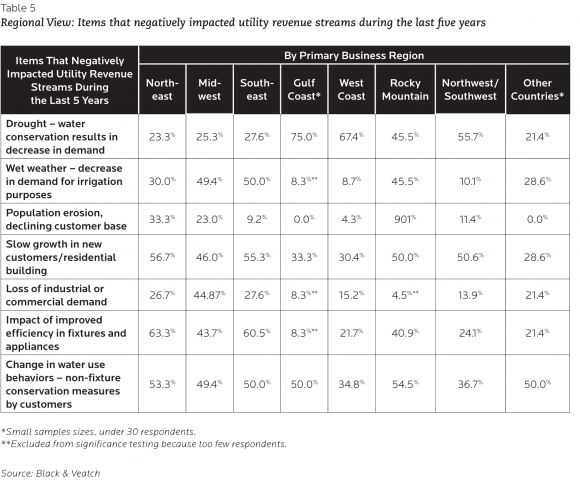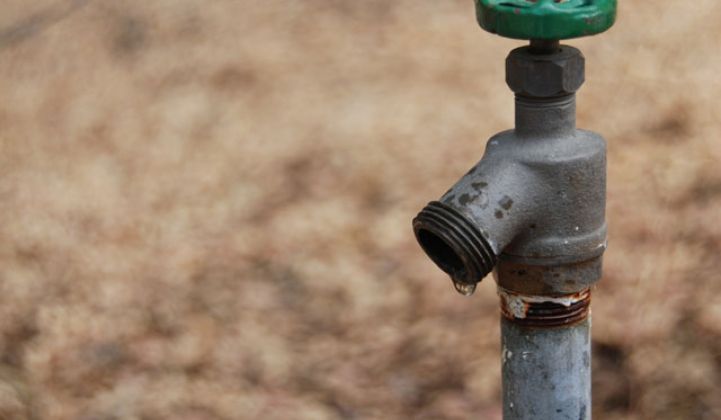When executives of U.S. water utilities were asked about their industry's most pressing issues, more than half said maintaining or extending asset life is a top priority.
But only about 10 percent said climate change, which could further reduce water supplies in already water-stressed regions, was a significant sustainability issue.
A new water industry report by Black & Veatch highlights the chasm of concern over water availability between communities and their local water utilities. No matter which drivers are identified, the investment needed for sustainable water supplies continues to fall short.
On the other end of the spectrum, 40 percent of non-utility stakeholders surveyed said that climate change was a significant issue for water utilities. About half of the surveyed water utilities said they had assessed the vulnerability of most of their assets, but only 15 percent included climate change factors in that analysis. For most utilities, addressing climate change means investing in water conservation and energy management and assessing protection for vulnerable facilities.
“There are still a number of agencies that have not assessed the vulnerability and resilience of all key assets, which represents a major blind spot related to risk,” Ralph Eberts, managing director for integrated solutions at Black & Veatch, wrote in the report.
It’s not just California water agencies that are feeling the strain of drought. Seventy-five percent of Gulf Coast water utilities and more than a quarter of those in the Southeast and Midwest said that water conservation efforts enacted due to drought had reduced demand and adversely affected revenues.

California’s governor has mandated that urban water utilities update their rate design, including the implementation of conservation pricing. New pricing schemes are not being considered widely, however. Only a small fraction of water utilities across the U.S. are looking at time-of-use rates, according to the report. Instead, 60 percent of utilities said they were planning or considering increasing base or fixed charges to stabilize revenue.
Additional base charges may not be enough, however. “To successfully combat the long-term supply challenges currently facing California and other regions under pressure, we believe utilities must strengthen their management of water demand, develop more stable water sources, and devise rate structures to generate stable revenues,” Geoffrey Buswick of Standard & Poor’s wrote in the report. He pointed to California’s nearly $15 billion Bay Delta Conservation Plan that will likely raise Metropolitan Water District of Southern California customer bills by about $5 per month.
Despite the critical need for investment, there is a chicken-and-egg problem that Black & Veatch identified between U.S. water utility leaders and engineers. Executives said they want technology to be proven before they invest in it, and yet engineers are saying that the C-suite’s proof-of-concept concerns are sidelining upgrades.
For now, water utilities across the U.S. are still plucking low-hanging fruit. Nearly half said they are trying to identify and reduce water losses, and 45 percent are investing in smart water meters.
A move to measure water use more accurately, but also increase fixed charges, could provide revenue in the short term, but raises concerns in the long term about access.
Black & Veatch noted the parallel to the electric utility industry, which is involved in bitter battles over increased fix charges as energy efficiency and rooftop solar PV have reduced revenue.
No matter what the solution turns out to be, the financial viability of many water utilities is questionable in the face of low water prices. “There is less concern [about] the financial health of water utilities versus one year ago,” wrote Ann Bui, managing director for Black & Veatch’s water practice. “Unfortunately, this does not mask the fact that, for most, current revenues simply do not cover all financial obligations.”



